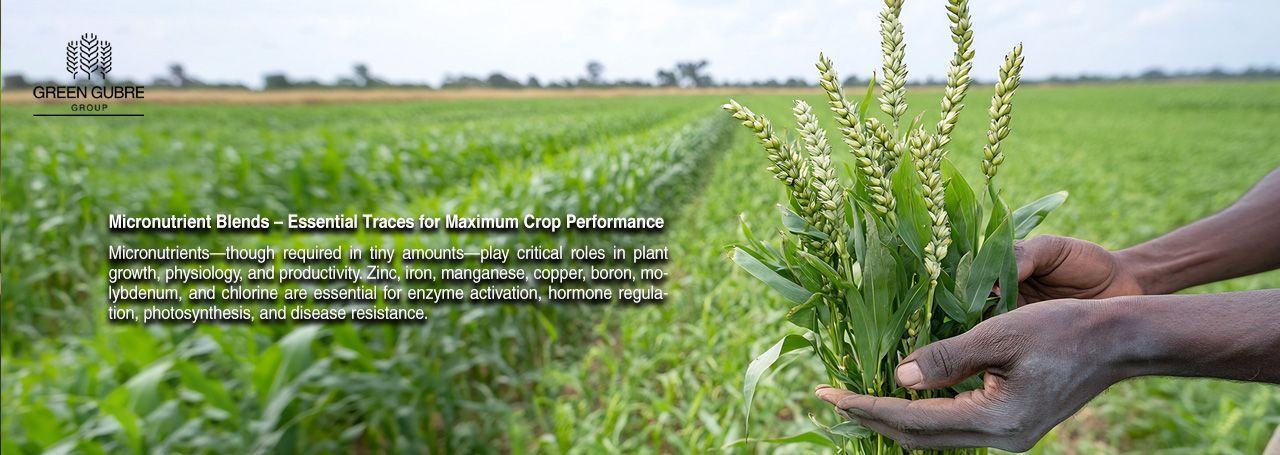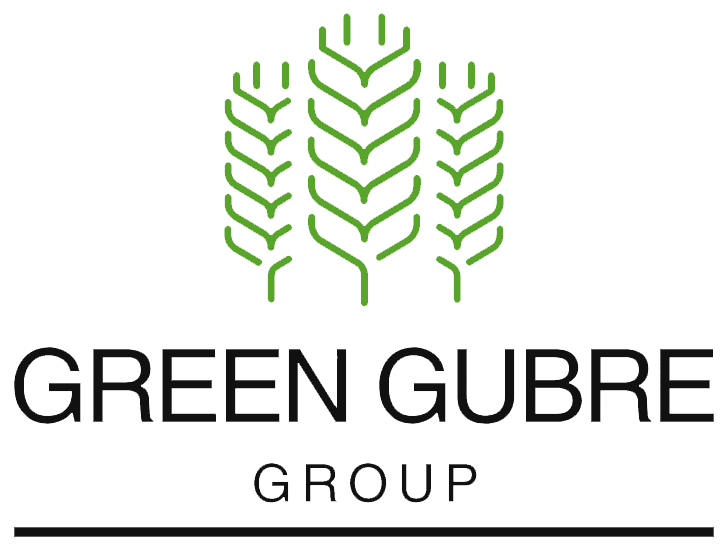Micronutrient Blends – Essential Traces for Maximum Crop Performance
Micronutrient Blends – Essential Traces for Maximum Crop Performance

Introduction: Small Elements, Big Impacts
Micronutrients—though required in tiny amounts—play critical roles in plant growth, physiology, and productivity. Zinc, iron, manganese, copper, boron, molybdenum, and chlorine are essential for enzyme activation, hormone regulation, photosynthesis, and disease resistance. Deficiencies in one or more of these elements can cause severe reductions in crop yield and quality, even when NPK levels are optimal.
Micronutrient blends provide a targeted and efficient way to correct soil imbalances, enhance nutrient uptake, and ensure that the plant's physiological processes function optimally. These blends are often customized for specific crop types, soil pH levels, and regional nutrient deficiencies, and are integral to precision nutrient management.
1. Why Crops Need Micronutrients
Each micronutrient plays a distinct and irreplaceable role:
- Zinc (Zn): Vital for enzyme activation and auxin production; key in cereals.
- Iron (Fe): Essential for chlorophyll synthesis and respiration; deficient in calcareous soils.
- Manganese (Mn): Supports photosynthesis, nitrogen assimilation, and disease resistance.
- Copper (Cu): Aids lignin formation and pollen viability; critical in fruits and grains.
- Boron (B): Facilitates sugar transport, root elongation, and flower development.
- Molybdenum (Mo): Enables nitrogen fixation and nitrate metabolism in legumes.
- Chlorine (Cl): Involved in osmoregulation and stomatal function in salt-sensitive crops.
Deficiencies manifest as interveinal chlorosis, malformed fruits, necrosis, or poor pollination—symptoms often misattributed to pests or NPK issues.
2. Types of Micronutrient Blends
Micronutrient blends can be customized in various formulations:
- Chelated Blends (EDTA, DTPA, EDDHA): For foliar or fertigation use, especially in alkaline or high-pH soils where metal micronutrients are unavailable.
- Sulfate Forms (e.g., ZnSO₄, FeSO₄, MnSO₄): Cost-effective, suitable for soil applications, but less stable in high pH.
- Granular Micronutrient Mixes: Designed for field broadcasting or blending with base fertilizers.
- Liquid Micronutrient Fertilizers: Used for foliar sprays and drip systems, often combined with biostimulants or amino acids.
- Multi-Micronutrient WSFs: All-in-one blends for drip and hydroponic use.
3. Crop-Specific Micronutrient Strategies
Different crops have distinct micronutrient requirements:
- Rice & Maize: Need zinc and iron supplementation, particularly in flooded or alkaline soils.
- Legumes (Soybean, Chickpea): Require molybdenum and boron to support nodulation and flowering.
- Tomato, Cucumber, Melon: Boron and calcium improve fruit set, quality, and shelf life.
- Wheat & Barley: Responsive to manganese and copper, especially in sandy or weathered soils.
- Banana & Citrus: Benefit from magnesium, boron, and zinc for fruit quality and uniformity.
Localized foliar application is efficient during flowering, fruiting, or immediately after abiotic stress events, such as drought or hail.
4. Global Micronutrient Market Trends
Micronutrient use is increasing rapidly as more regions adopt precision farming and soil testing:
- India: The government promotes the use of ZnSO₄ in rice and wheat as part of national nutrient campaigns.
- Africa: Micronutrient deficiencies affect over 50% of croplands; donor-funded programs promote soil health mapping and targeted blends.
- China & Brazil: Integrating chelated micronutrients in fertigation and export horticulture.
- Europe: Strict nutrient efficiency rules incentivize the use of micronutrient blends in both conventional and organic systems.
The global micronutrient fertilizer market is forecast to exceed $10 billion by 2030.
🔗 MarketsandMarkets – Micronutrient Fertilizer Market Forecast
5. Green Gubre Group – Balanced Blends for Every Need
At Green Gubre Group, we formulate and supply a full suite of micronutrient solutions:
- Chelated Micronutrient Mixes: Custom blends for soil pH, crop stage, and delivery method
- Granular and Liquid Micronutrients: Zinc, iron, copper, boron, and manganese
- Multi-Nutrient Packages: Combined with NPK or SRF/CRF formulations
- Advisory Services: Soil testing, foliar diagnosis, and compatibility planning for practical application
Our micronutrient programs are grounded in science and tailored to empower farmers with precision, performance, and long-term soil health and sustainability.




